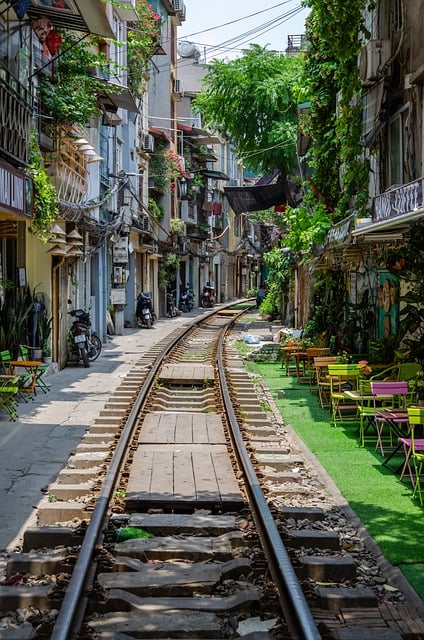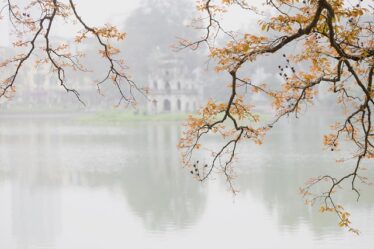
Introduction
Hanoi, the capital of Vietnam, is a city that blends ancient tradition with modern vibrancy. Situated in the northern part of the country, Hanoi is renowned for its rich history, charming streets, and cultural landmarks. As the political and cultural hub of Vietnam, Hanoi offers a fascinating glimpse into the country’s past and present. This detailed guide explores the best places to visit, activities to enjoy, and experiences to savor in this dynamic city.
Historical Overview
A City with a Storied Past
Hanoi’s history dates back over a thousand years, making it one of the oldest continuously inhabited cities in Southeast Asia. Originally founded as Thang Long (“Ascending Dragon”) in 1010 by Emperor Ly Thai To, the city has served as the capital of various Vietnamese dynasties. Its long history is reflected in its architecture, cultural traditions, and historical sites.
Colonial Influence
During the late 19th and early 20th centuries, Hanoi was under French colonial rule, which left a lasting impact on the city’s architecture and urban planning. French colonial buildings, wide boulevards, and cafes add a distinct European flair to Hanoi’s landscape, creating a unique blend of Eastern and Western influences.
Top Attractions
1. Ho Chi Minh Mausoleum
- Overview: The Ho Chi Minh Mausoleum is a monumental structure dedicated to Ho Chi Minh, the founder of modern Vietnam. It is located in Ba Dinh Square, where Ho Chi Minh declared Vietnam’s independence in 1945.
- Highlights: Visitors can pay their respects to the embalmed body of Ho Chi Minh, explore the nearby Presidential Palace, and visit the Ho Chi Minh Museum for a deeper understanding of his life and legacy.
2. The Old Quarter
- Overview: Hanoi’s Old Quarter is the heart of the city’s historic district, known for its narrow streets, traditional architecture, and bustling markets. The area is famous for its “36 Streets,” each named after the trades once practiced there.
- Highlights: Wander through the vibrant streets to experience local life, shop for souvenirs, and sample street food. Key streets include Hang Bac (Silver Street) and Hang Luoc (Bamboo Street).
3. Hoan Kiem Lake
- Overview: Hoan Kiem Lake, also known as Sword Lake, is a serene oasis in the heart of Hanoi. The lake is associated with a legend of a magical sword and is a popular spot for locals and tourists alike.
- Highlights: Visit the Ngoc Son Temple located on an island in the lake, stroll along the lakeside promenade, and enjoy the peaceful environment.
4. Temple of Literature
- Overview: The Temple of Literature is Vietnam’s first university and a revered site dedicated to Confucius. Founded in 1070, it served as an educational institution for scholars and mandarins.
- Highlights: Explore the beautiful traditional architecture, serene courtyards, and the stelae honoring outstanding scholars. The temple is also a symbol of Vietnam’s respect for education and learning.
5. Hanoi Opera House
- Overview: The Hanoi Opera House is a stunning example of French colonial architecture and a major cultural venue in the city. Opened in 1911, the opera house hosts a variety of performances, including opera, ballet, and classical music.
- Highlights: Attend a performance to experience the opulent interior and enjoy a cultural evening. The opera house also offers guided tours for visitors interested in its history and architecture.
Cultural Experiences
1. Traditional Water Puppet Show
- Overview: Water puppetry is a traditional Vietnamese art form that dates back to the 11th century. The shows are performed in a water-filled stage, with puppets depicting folklore, legends, and daily life.
- Highlights: Watch a performance at the Thang Long Water Puppet Theatre, where you can enjoy the colorful puppetry and live traditional music.
2. Vietnamese Cuisine
- Overview: Hanoi is renowned for its delicious and diverse cuisine, which includes a variety of flavors and ingredients. The city’s street food culture is particularly famous, offering a taste of authentic Vietnamese dishes.
- Must-Try Dishes:
- Pho: A fragrant noodle soup with beef or chicken, served with fresh herbs and condiments.
- Bun Cha: Grilled pork patties served with vermicelli noodles, fresh herbs, and a tangy dipping sauce.
- Cha Ca: A unique dish featuring marinated fish, turmeric, and dill, served with rice noodles and peanuts.
3. Local Markets
- Overview: Hanoi’s markets are vibrant and bustling, offering a variety of goods from fresh produce to handmade crafts. They provide a glimpse into local life and are excellent places to experience the city’s dynamic atmosphere.
- Top Markets:
- Dong Xuan Market: The largest indoor market in Hanoi, known for its diverse range of goods, including clothing, electronics, and food.
- Hang Ma Market: A market specializing in traditional Vietnamese items, including decorative paper goods and festival items.
Outdoor Activities
1. Hanoi Botanical Garden
- Overview: The Hanoi Botanical Garden is a lush green space that offers a peaceful retreat from the city’s hustle and bustle. The garden features a variety of plants, trees, and flowers, as well as several ponds and walking paths.
- Highlights: Enjoy a leisurely stroll through the gardens, have a picnic, or simply relax amidst nature.
2. Hanoi Cycling Tours
- Overview: Cycling tours are a great way to explore Hanoi’s neighborhoods and discover hidden gems. Many tours take you through both historic and modern parts of the city, providing a unique perspective on local life.
- Highlights: Join a guided cycling tour to explore areas such as West Lake, the Old Quarter, and surrounding countryside.
Practical Information
Getting Around
- Public Transport: Hanoi has a variety of public transportation options, including buses and taxis. The city also features a new metro system that connects key areas.
- Cyclo and Motorbike Taxis: For a more traditional experience, try a cyclo (bicycle rickshaw) or motorbike taxi to navigate the city’s busy streets.
Accommodation
- Hotels: Hanoi offers a range of accommodation options, from luxury hotels to budget hostels. Popular areas for tourists include the Old Quarter and Hoan Kiem Lake.
- Vacation Rentals: For a more personalized stay, consider renting an apartment or house in one of Hanoi’s charming neighborhoods.
Weather
- Seasonal Considerations: Hanoi experiences four distinct seasons. The best time to visit is from October to April when the weather is cooler and more pleasant. The summer months (May to September) are hot and humid, with occasional rain.
Conclusion
Hanoi is a city that offers a rich tapestry of experiences, blending its ancient heritage with modern vibrancy. From its historic sites and cultural landmarks to its bustling markets and delicious cuisine, Hanoi provides a wealth of activities and attractions for visitors. Whether you’re exploring its historic temples, enjoying traditional performances, or savoring local dishes, Hanoi promises a memorable and immersive journey through Vietnam’s capital.

